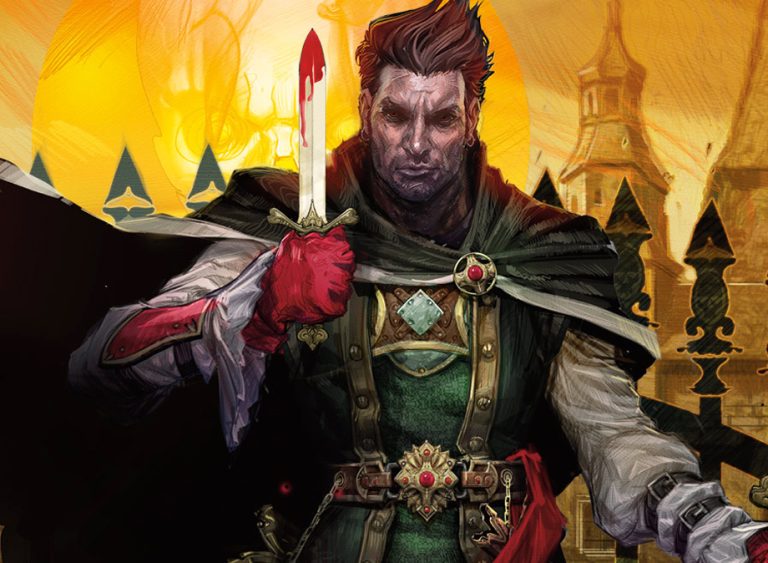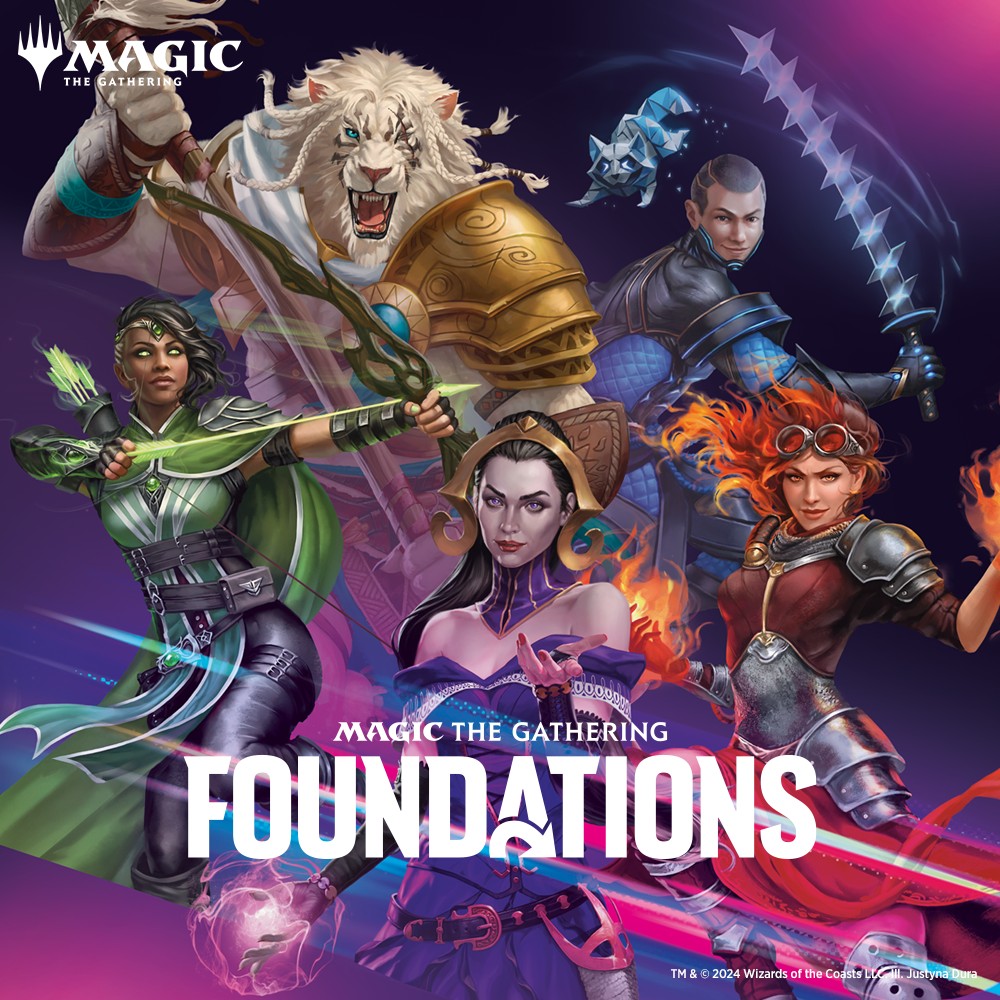With the recent announcement of Van Richten's Guide to Ravenloft, there will soon be much more opportunity to explore one of the most popular settings of this game we all love. The release, due in May, promises to have us all quivering in abject horror (vampires and zombies and ghosts, oh my!) with new Domains of Dread to explore and all sorts of fun we can sprinkle into our homebrew campaigns as well. It is sure to be a great time, with lots of scares, thrills, and tense moments. However, we need not wait until May to add some good ol' tension to our games! Even if you aren't running a spooky, scary, or horror-themed game, tension is a key element to a thrilling D&D session. So how should you create tension in your D&D game? Let's dig in and crank the suspense to 11!
What is Tension?
Largely, tension is created by the unknown, and the unsaid. It is anticipation for what is to come, rather than something that is happening right now. It is the feeling that something is not quite right, but you're not exactly sure what. It's a general sense of unease. This can be tricky to create in a game of pure imagination, but it very much can be done. I'll break the methods down into 2 main categories:
- Story (things the characters know and experience)
- Mechanics (things the players know and experience)
Tension from the Story
Threat of Death
This is one of the most common ways to create tension, and arguably the easiest. Big scary bad people that can kill your whole party (BSBPTCKYWP) will absolutely raise the tension. However, this can easily be overdone - losing its effect. Still, in a game that is heavily combat-oriented, you should definitely have some big scary bad guys that can kill your whole party.
Foreshadowing
The best way to use the BSBPTCKYWP (maybe we can shorten that acronym... Big Bad Evil People? BBEP?) is to foreshadow their badness. Let your players see early just how big and scary they are, even before they have to face them themselves. You can use other NPCs to tell horrible stories or even have the characters witness, from a distance, their badness at work. This works best if they witness this event well before they are able to confront them directly.
Another interesting option is to have them face your party directly and leave them on the brink of death. As the BBEP walks away, unscathed from the encounter, have them mutter "you're barely worth the effort, now be gone from my sight and my lands!". This sets up a great arc for the characters while they gain power and renown, finally facing and defeating the evil Count/Wizard/Devil/Beast/whatever.
Any way that you can give a clue about some terrible future if the characters don't take action will both increase tension as well as drive the narrative forward. Ancient prophecies, visions, warnings from deities, letters from loved ones, and anything else that you can think of will fit this role nicely. Try to keep the consequences direct and clear, while the path to prevent it somewhat murky or uncertain.
Attachment to NPCs
This sounds a little horrible, but if your PCs have NPCs that they care about, threatening them makes the tension ramp up very quickly! Nothing motivates a party more than kidnapping Krandl the goblin they adopted 3 sessions ago. Give the PCs options and time to create and cultivate relationships with NPCs, giving you a lever to create that tension. Depending on the style of game and what your players are comfortable with, this is a good place to exercise some caution. Killing NPCs and (especially) beloved pets outright is a potential real-life trauma-causing action (and a total jerk move...).
Keep in mind that this game is supposed to be fun for everyone, so if you plan on doing something terrible, make sure you talk to your players ahead of time about it, to make sure everyone is on board. It is much more interesting to kidnap or temporarily curse these NPCs, giving PCs options to rescue or cure their beloved pet duck (or brother. Or brother that was turned into a duck! *takes notes furiously*).
Difficult Choices
Giving your players choices where the best option is not clear. If they're in a scenario where all options are somewhat morally grey, it creates tension by letting your players wonder if they've made the right choice. Letting them wonder what would have happened if they had chosen the other path, or if they've doomed some unknown civilization by their actions will create a palpable tension at the table.
High Stakes
This is related to all of the previously mentioned methods, but give your PCs increasingly, exponentially increasing stakes. They should feel like just as they have vanquished the BBEP, there is a moment of pause, and then BAM! A bigger, badder, eviler person (BrBrErP)!! Facing the town guard, again, at level 15 is just not that interesting. Raise the stakes and give bigger consequences to their failures.
Mechanics
Outside of the story, we have the game mechanics themselves. Here are a few ways that we can physically represent the tension inside the story in the external world:
Tension Dice
There are a few ways to do this, but the general idea is to use dice to physically represent the mounting tension:
- Tower of Terror. Every time a certain event happens, stack 1d6 onto another d6. Add another die every time a certain event happens or a choice is made. This could be failed ability checks, time spent in a certain area, being noisy, activating traps, alerting certain NPCs, etc. As the tower grows, it will be harder and harder to keep the tower from falling (don't bump the table!) and once it falls <the thing> happens. To execute this correctly, make sure you have a good idea of events that will add dice (make yourself a list) as well as a good idea of what <the thing> that will happen is.
- Bowl of Doom. Similar to the above method, add dice to a bowl every time the party does something (or doesn't do something). Once the players reach <the place> roll all the dice. If they add up to <a number that you choose> then something bad happens. You will have to customize this based on your story and the location, but it can be particularly interesting if used in social encounters. You could use this to represent the growing unease as your players try to convince the council to aid them in their quest. Perhaps you could also turn it around and add a die every time the players successfully get an NPC on their side, rolling all the dice at the end of the encounter would get them some extra help if it was over a certain number.
- Dice Roll of Despair. Each time your PCs fail a stealth check, spend too long in an area, or take a wrong turn, have someone roll 1d6 (1d4 to make it easier, 1d8 to make it harder. You get it...). Keep track of the total somewhere that everyone can see it. If the total ever gets over a certain threshold (that you will have to decide for yourself) <the thing> happens. You can adapt this to many different situations, but this one is particularly well suited to online play.
Music
Music at your table is probably the single best way to increase tension and set a particular mood. Have you ever watched Jaws with the volume down? It's boring. Most of the time it's just people looking at the ocean. But that music (I know you can hear it as you're reading this. You're welcome...) instantly pricks up the hair on the back of your neck. There's a ton of amazing TTRPG music on YouTube for free (I'm a big fan of Michael Ghelfi) and Spotify also has a ton of great stuff (like this guy). Music can truly transform your 'just ok' session into an entirely different league.
Description
Using descriptive language will also allow you to bring up that tension. Describing inanimate objects as if they moved, like the eyes of a painting following you, has an instantly creepy vibe. Describing the sounds of the forest going quiet, or a flock of birds taking flight in the distance will give the PCs a "what's that?!" reaction. Even if this has nothing to do with the game mechanically, describing the setting like this sets the tone. I have another article all about using descriptive language that you can use to get some additional tips for using language to elevate your games if you're interested. Remember, tension is the anticipation of something to come, so describe things that could be potentially dangerous and let your player's imaginations fill that void for you.
Time
“To achieve great things, two things are needed: a plan and not quite enough time.”
― Leonard Bernstein
Pressure from the clock will always give your players a sense of tension. This can be represented as a physical timer like a sand timer from a board game, or an egg timer, or even the timer on your phone. As those seconds tick down, panic sets in, and they'll start scrambling! Make sure that whatever happens at the end of the timer is clear to everyone, and once that timer is done, there are no do-overs.
This works for longer-term events as well. Giving the players a certain number of days to complete something, with consequences for not finishing it in that time, is also great for building tension over time.
Tension is an essential part of any great D&D session, and learning how and when to use it to its greatest effect is probably a lifelong lesson (I'm certainly still learning how). Practice and preparation are key of course, and with a little of each, we can run some truly memorable games for our friends. Well, that's all for this week, thanks for tuning in, and don't forget that there are 20 sides to every story!
-The Intrepid Adventurer


